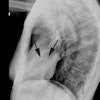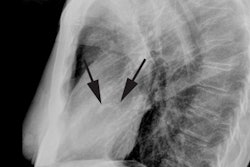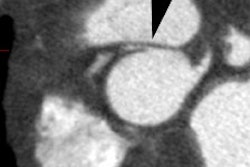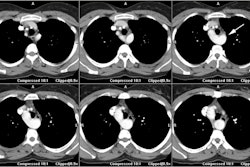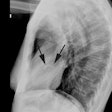Magn Reson Imaging Clin N Am 1996 May;4(2):307-325. MR imaging of pulmonary hypertension and right ventricular dysfunction.
Boxt LM
Right ventricular cardiac function is altered by abnormalities affecting primarily the left-sided cardiac structures, the lungs, or the right-sided cardiac structures themselves. The most common cardiac causes for right ventricular dysfunction are chronic left ventricular ischemia and rheumatic mitral valvular disease. Pulmonary diseases that result in right ventricular dysfunction include pulmonary air-space disease, including emphysema, and pulmonary interstitial and parenchymal diseases, including idiopathic pulmonary fibrosis and cystic fibrosis. Chronic pulmonary vascular disease, including chronic thromboembolism and PPH have a significant effect on right ventricular performance. Common to all of these diseases is elevation of pulmonary vascular resistance with a commensurate increase in right ventricular pressure, resulting in right ventricular hypertrophy. The limited ability of right ventricular myocardium to function in the face of increased pulmonary resistance results in right ventricular dilatation, tricuspid regurgitation, and ultimately right ventricular failure. MR imaging provides direct, noninvasive visualization of the right ventricular chamber as well as the myocardium itself, allowing reliable demonstration of morphologic changes in the size and shape of the ventricle, thickness of the myocardium, and presence of abnormal infiltration by fat or edema. Furthermore, because MR imaging techniques do not depend upon geometric assumptions about the complex shape of the right ventricle, they may be used for accurate and reproducible quantitation of right ventricular volume and myocardial mass.
PMID: 8724568, MUID: 96321251
